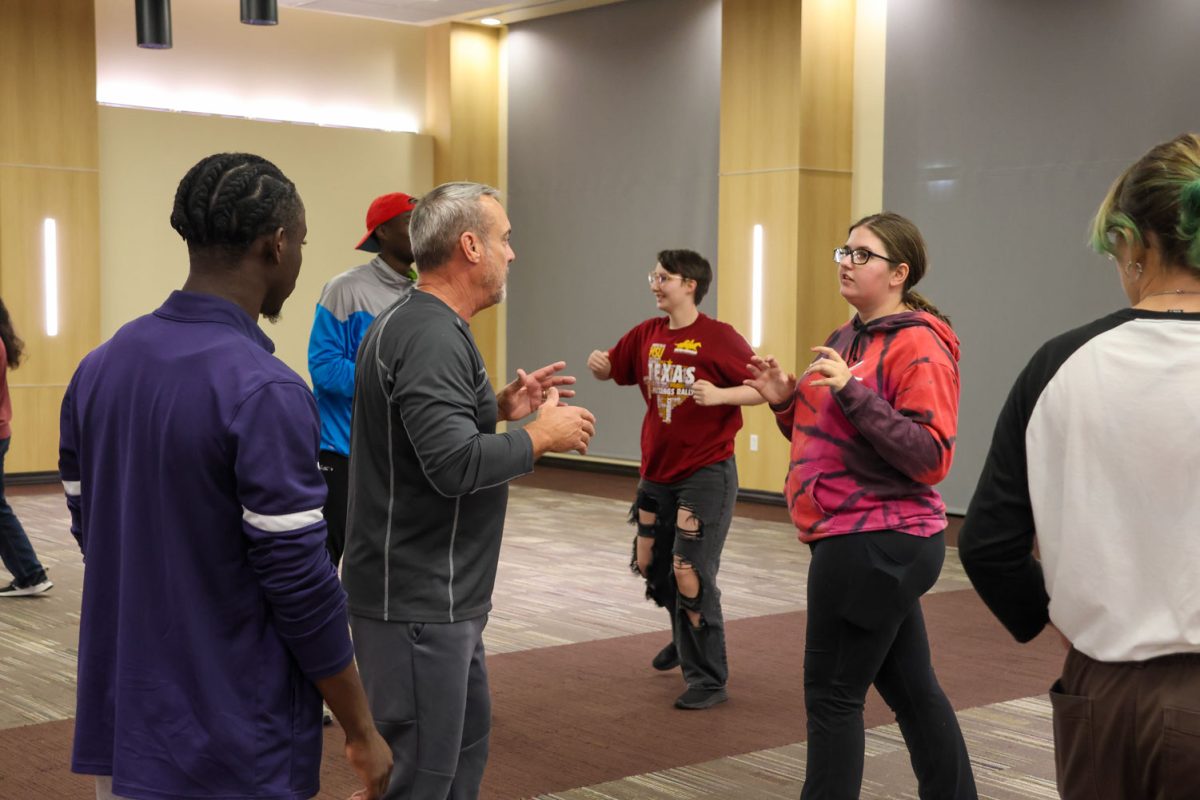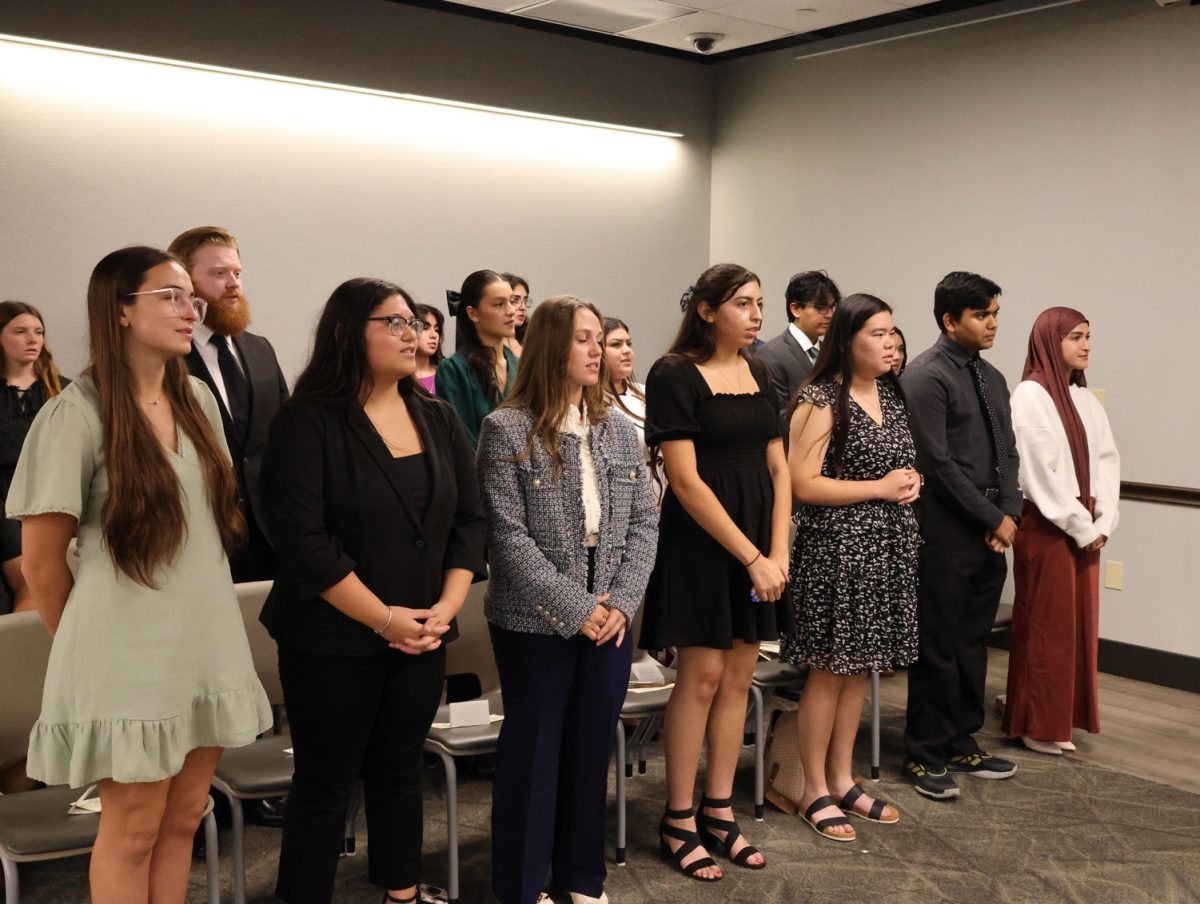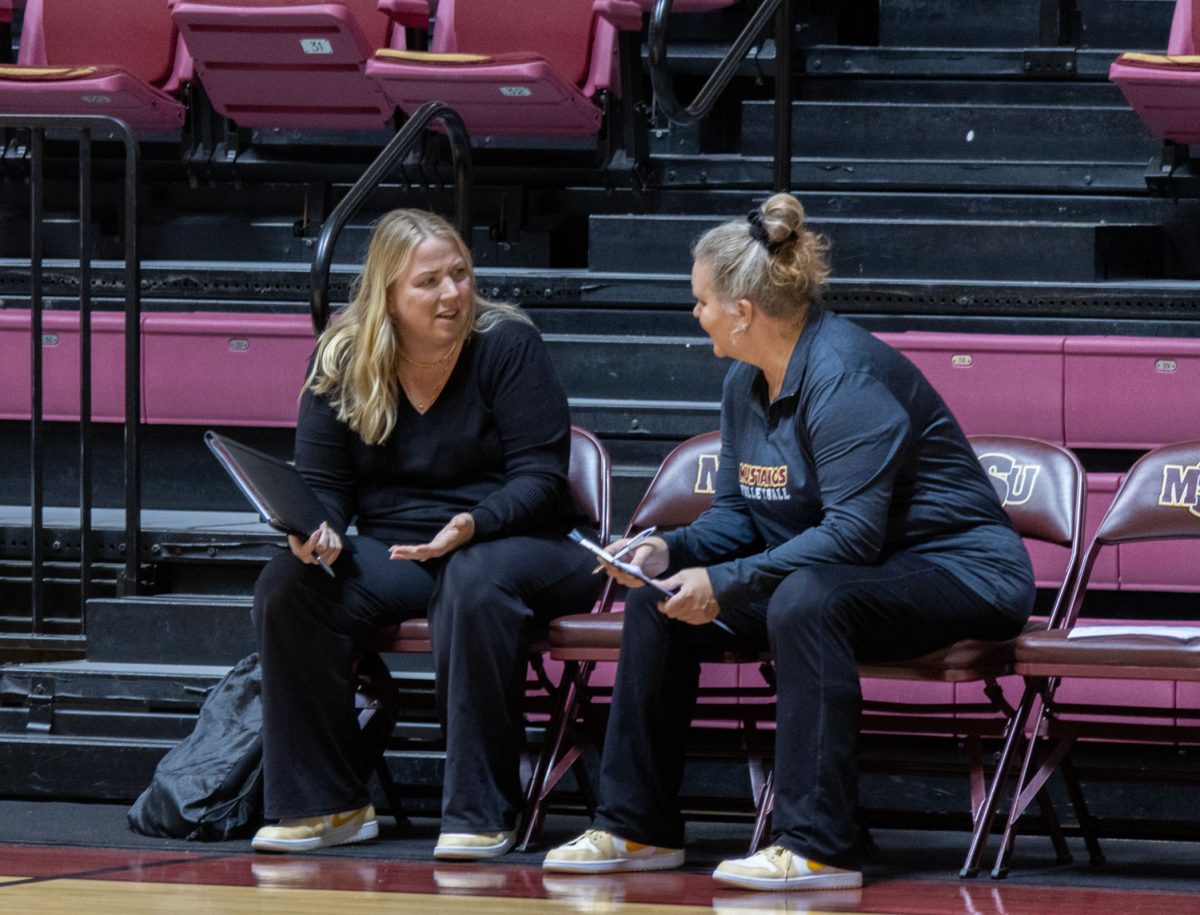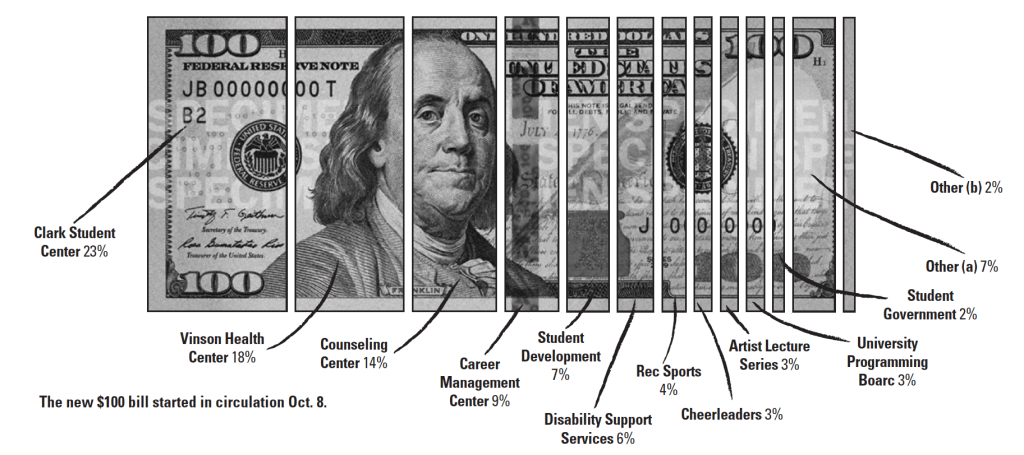
Between tuition and fees, students pay slightly more than $3,000 per year to attend MSU, making it, according to AffordableCollegesOnline.org, a top college in Texas for greatest lifetime return on investment.
Tuition generally covers the cost of classroom education, but a myriad of fees cover the others costs of attending college, everything from the health center to the Steel Pan Ensemble. Students fund these services by paying a student service fee each semester which costs $15.50 per credit hour.
Vice President for Student Affairs and Enrollment Management Keith Lamb said the fee is authorized by the state legislature, allowing all public universities in Texas to charge the fee.
Lamb said these services are important to give students a true collegiate experience and provide care for students that need it.
“The fee exists to benefit the students,” Lamb said. “That can be anything from student programming to student organizations to actual offices that serve students.”
Because the service fee exists to benefit the student body, a committee of five students appointed by the Student Government Association decides how that fee will be allocated, but Lamb and other faculty members serve as advisers to that committee.
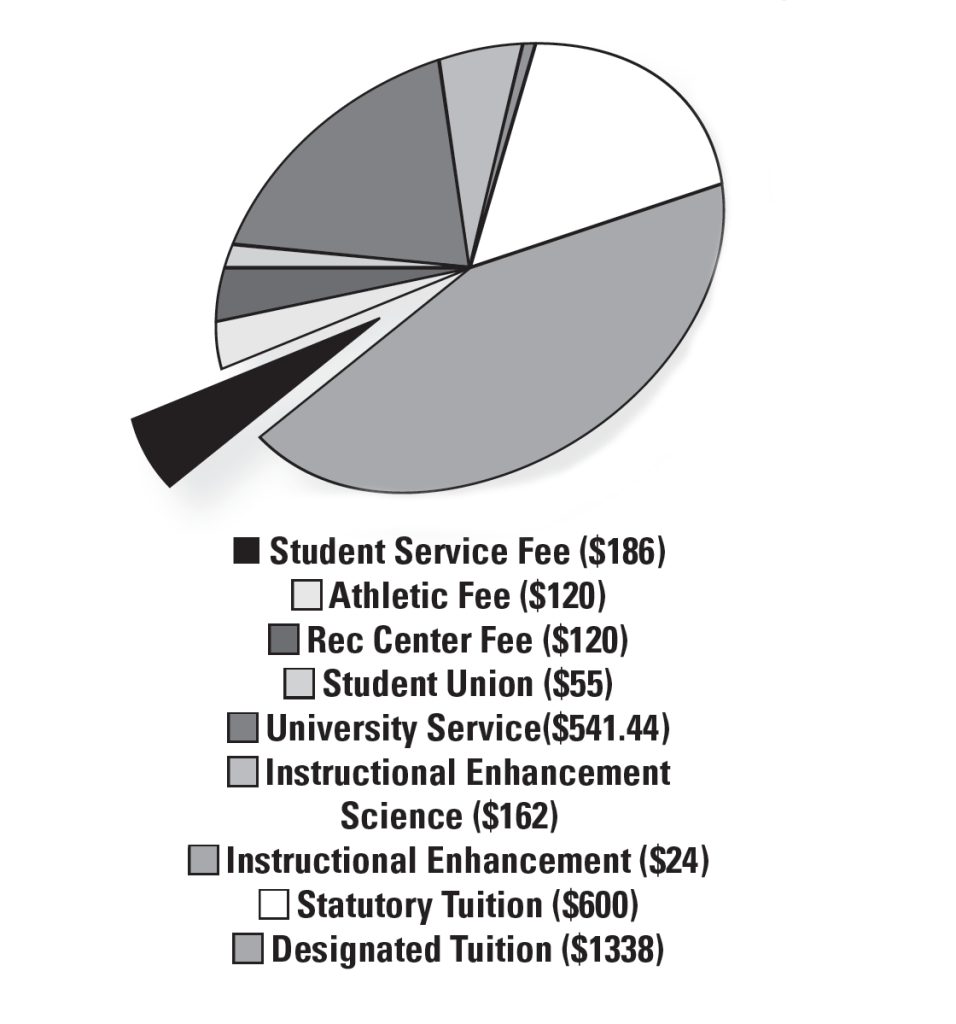
“Our role is to just give advice just because we have the historical perspective. We’re the constant. We’re here year after year so we can help make some of those decisions when funding is tight,” Lamb said. “We don’t have a vote but I think the constant is important to have some type of perspective on it.”
Marilyn Fowlé, vice president for business affairs and finance, and adviser to that committee, said she gives the committee members business-related advice, but the students are the only voting members on the council.
“The students kind of have control in how that money is spent,” Fowlé said.
Lamb said the students on the committee are always thoughtful and considerate because they are appointed by student government officials.
“We’ve never had a situation, as long as I’ve been involved, where anyone had an agenda on the committee,” Lamb said, “which I think is very important to note because I think that that speaks to the ability of the students on the committee to critically assess different departments and different organizations requesting funding.”
Lamb said any group that wants funding can fill out a request which the committee then decides based on importance and how much money is available, but it is not often when every request is approved.
“It’s a very rare year when they are able to give everyone everything they asked for, so that’s the difficult part of it for the students,” Lamb said. “They have to weigh what’s required for the institution to provide by law like disability support services.”
Lamb said the law doesn’t mandate how much funding the required services must receive, only that they are provided, so the committee must be careful to provide an accurate estimate of what those services will cost each year.
“There are other things that maybe are more flexible such as the artist lecture series or different programing because it’s not mandated by law,” Lamb said. “But it’s incredibly important to the student experience, so the committee has to weigh all those things.”
Lamb said that balancing act is made even more difficult with the recent influx of residential students because they use more services than commuters.
“Their parents aren’t there to help them. They don’t have the connections within the community as someone who is from that area would,” Lamb said. “That’s when services, not just on this campus but all other campuses like this, started becoming available to take care of students.”
Lamb said MSU has doubled its on-campus housing capacity over the last 10 years, and that trend will continue to grow as more students from the metroplex and Houston enroll.
“More students are using these services than they have in the past because it’s a residential model, yet the credit hour production has essentially remained unchanged, so the funding has essentially remained unchanged,” Lamb said. “That’s the administrative challenge in offering these services for an increasing residential population with the same funding.”
Lamb said the Counseling Center is one of the services most heavily affected by the increase in residential students.
“[The counselors] don’t have any free time right now, they are booked solid,” Lamb said. “If the residential population continues to grow, which it will, that’s going to be another stressor on that office.”
Lamb said access to the Counseling Center is critically important when it comes to health and safety on campus, which is why it receives 14 percent of the $2.24 million budget of the student service fee.
“How do we provide additional professionals with no increase in funding because credit-hour production is the same,” Lamb asked. “The quandary, if you will, that we have to work within is how to provide those services.”
Administrators are limited in what they can do to increase funding for important services like the Counseling Center thanks to a $250 per student per semester cap on fees imposed by the state legislature. No student can be charged more than $250, so anyone taking more than 16 hours will have maxed out that limit.
“The only thing we could do, and I have to be careful when I say this because there’s been no discussion to do this,” Lamb said, “is increase the per-hour cost, but there’s been no discussion of that and I don’t see that happening any time soon.”
Lamb said administrators did increase the per-hour charge four years ago, but they are hesitant to do that now because they don’t want to raise costs at an institution known for offering a relatively low cost of education.
“We’re trying to be incredibly sensitive to what students pay right now,” Lamb said. “We offer high quality at a very reasonable cost and that’s our niche, and we know that students who look at Midwestern are very cost-conscious.”
Fowlé said administrators are cautious when it comes to raising tuition and fees because a large portion of students have a low income.
“Forty-one percent of our students are on Pell Grants, which means they’re lower income so a lot of our student body is working part time trying to afford paying for school.”
Lamb said without increasing revenue, the student committee is left with few options if the Counseling Center requests more funding to hire more personnel.
“They have to go in here to some larger accounts and figure out who can absorb the cuts,” Lamb said. “And what’s happened over the last two years losing 500 students, almost all of these areas have already been cut, so it’s a very tight budget.”




